
Honoré Daumier was born into a glazier's family. 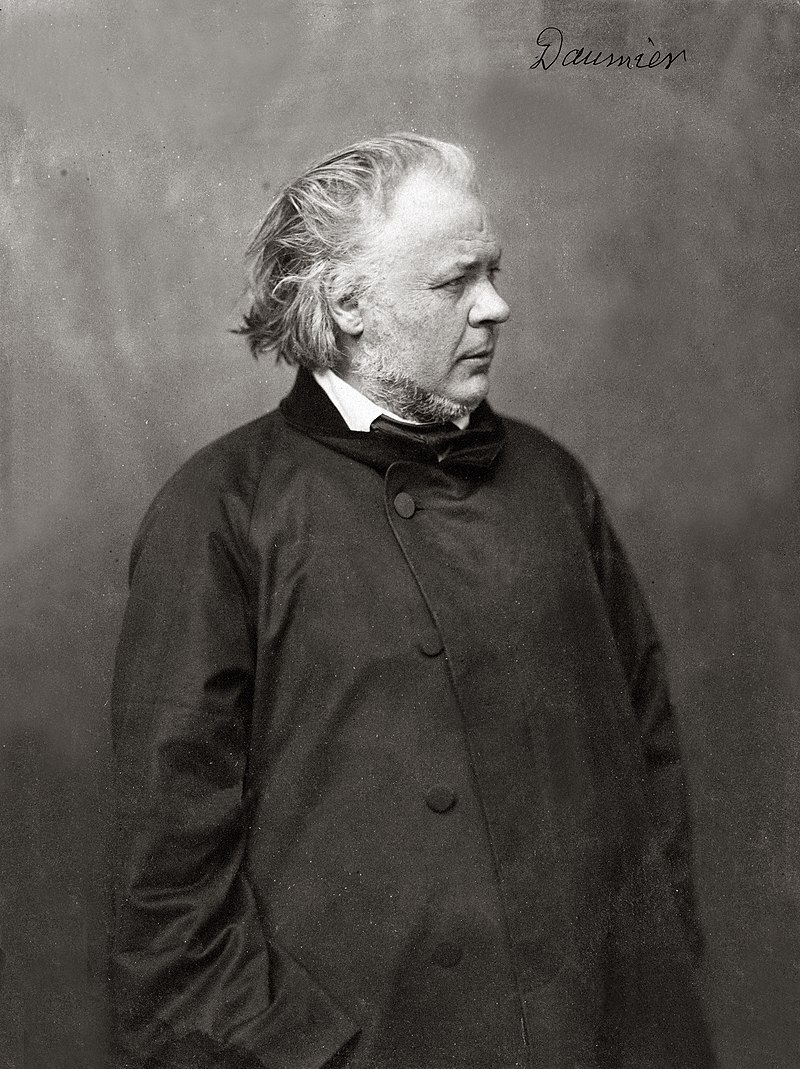 He started working early, first as a delivery boy and then as a bookseller. The tireless craving for beauty, reinforced by the wealth of Parisian museums, inspired him to start studying drawing, and then master lithography. From an early period, his work was not apolitical, under the influence of the revolution of 1830, he became a staunch opponent of the monarchy. The first genre in which Daumier became famous was caricature. Widely known are his caricatures of King Louis Philippe depicting him in the form of a pear and the giant Gargantua absorbing gold. For these cartoons, Daumier, accused of "insulting a member of the royal family", is sentenced to prison. For these caricatures, Daumier was sentenced more than once to fee penalty and even to a prison sentence.
He started working early, first as a delivery boy and then as a bookseller. The tireless craving for beauty, reinforced by the wealth of Parisian museums, inspired him to start studying drawing, and then master lithography. From an early period, his work was not apolitical, under the influence of the revolution of 1830, he became a staunch opponent of the monarchy. The first genre in which Daumier became famous was caricature. Widely known are his caricatures of King Louis Philippe depicting him in the form of a pear and the giant Gargantua absorbing gold. For these cartoons, Daumier, accused of "insulting a member of the royal family", is sentenced to prison. For these caricatures, Daumier was sentenced more than once to fee penalty and even to a prison sentence. 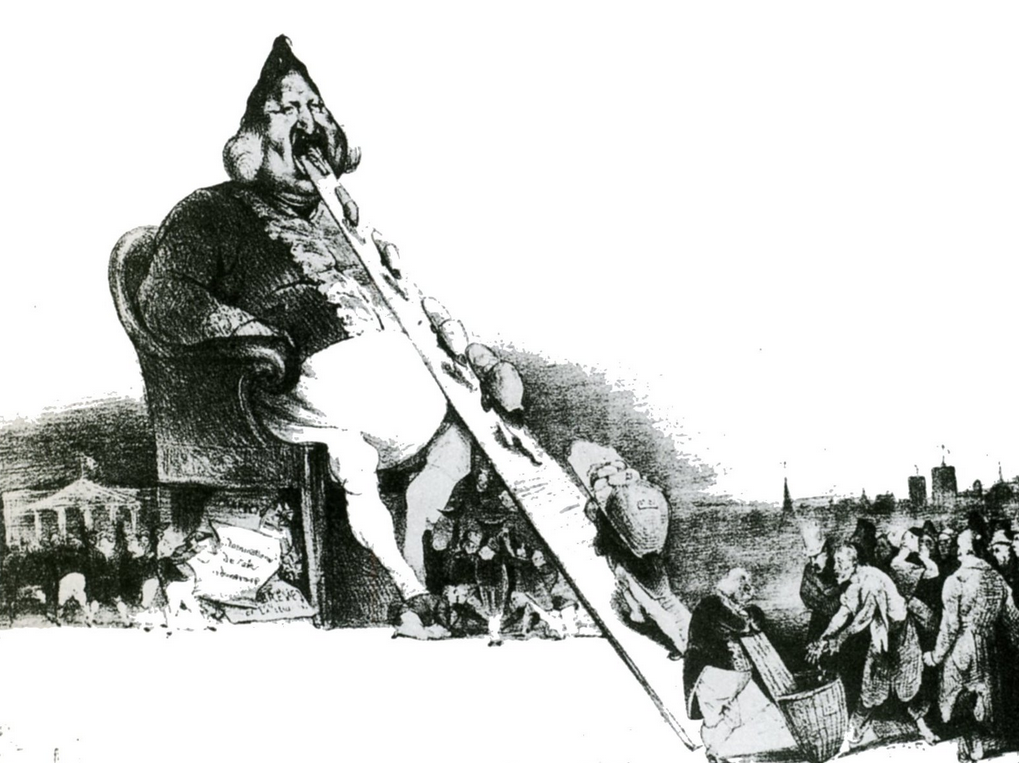

Honore Daumier, portrait by Nadar

Gargantua, 1831
Focusing on the main plot, Daumier manages to create a monumental style in lithographs, demonstrating the hard life of the common people and the acute social conflicts of that time. Daumier depicts scenes of reprisal and oppression of the working masses, demonstrates the workers defending their legitimate interests.
After 1835, with the establishment of total censorship, Daumier switched to social topics. The corruption of the courts, the falsity and pretense of the then justice was one of the favorite topics in his work at that time.
Daumier ardently supported the revolution of 1848, he again creates in the genre of political caricatures, which he made a true art. During the period of the second empire, due to the new tightening of censorship, he was actively engaged in painting, but did not change his convictions.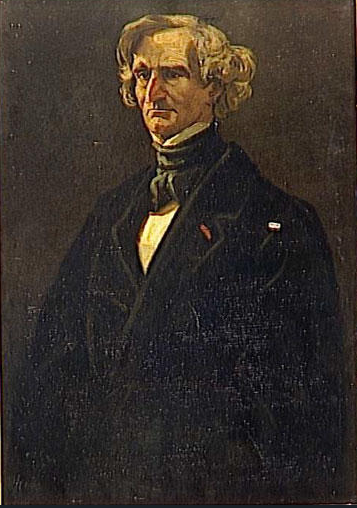 Welcomes the overthrow of Napoleon III, and then ardently supports the Paris Commune, becomes its member.
Welcomes the overthrow of Napoleon III, and then ardently supports the Paris Commune, becomes its member.

Portrait of the Composer Hector Berlioz 1860
The heroes of his paintings remain, as in the graphics, the working people of France, workers, artisans who rebelled for their rights. 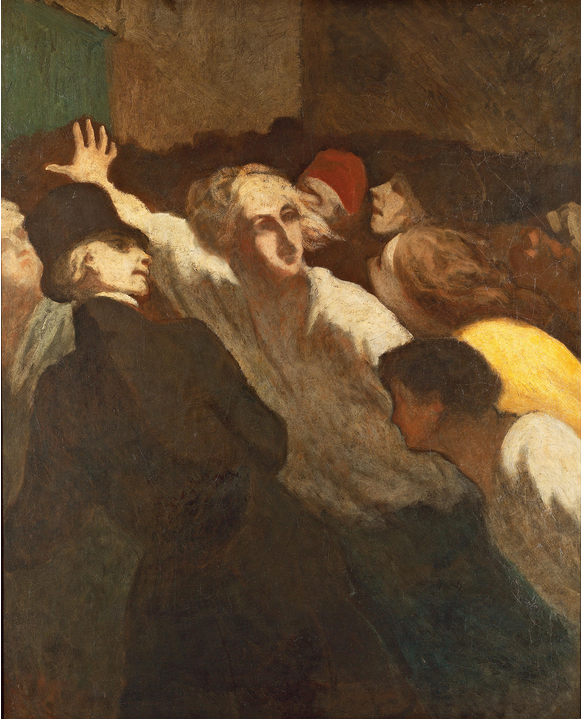 In painting, he tried to present positive images. The artist's involvement and a certain autobiographical nature is manifested in the compositions based on the plots of Don Quixote, created during the Second Empire.
In painting, he tried to present positive images. The artist's involvement and a certain autobiographical nature is manifested in the compositions based on the plots of Don Quixote, created during the Second Empire. 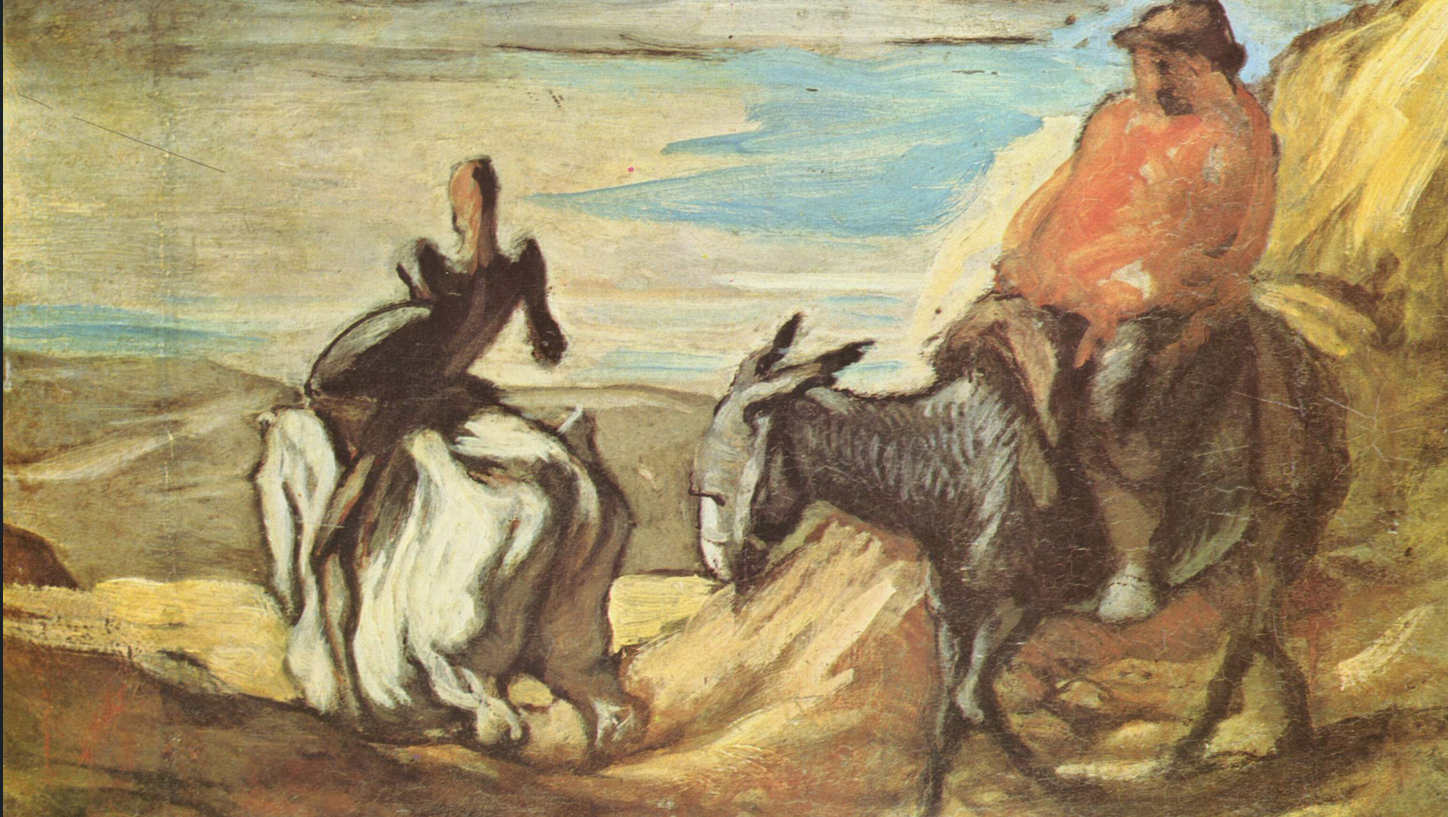

Uprising 1848-1849

Don Quixote and Sancho Panza
In the scenes of everyday life, he depicts workers in a daily setting, on the streets, embankments, while working, traveling or taking a short break. Daumier combines tragic, heroic and lyrical motifs.
A participant and witness to the repeated revolutionary uprisings of the people, Daumier, following Delacroix, created images of the insurgent people of revolutionary France. The artist constantly uses light to enhance the effect, often placing the characters against the light, emphasizing their characteristic silhouettes.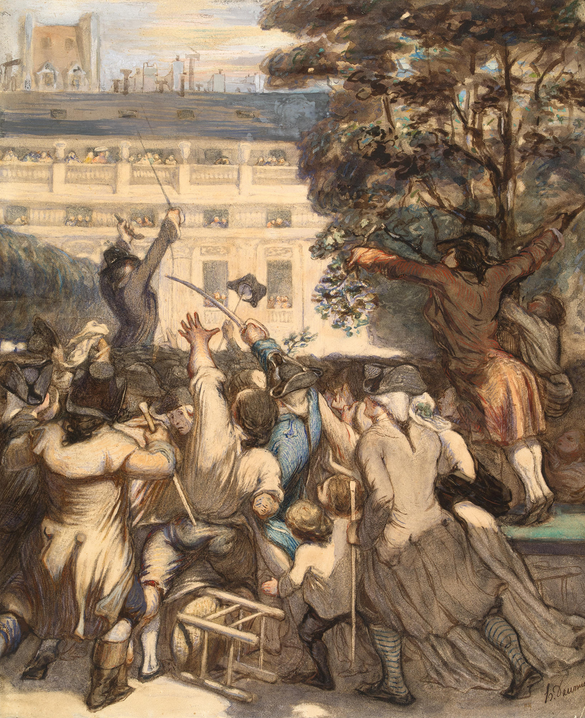

Camille Desmoulins in the garden of the Palais Royal 1850
Among art historians, the opinion prevails that Daumier's art served as the foundation for impressionism and that, in essence, the artist can be considered the first impressionist. 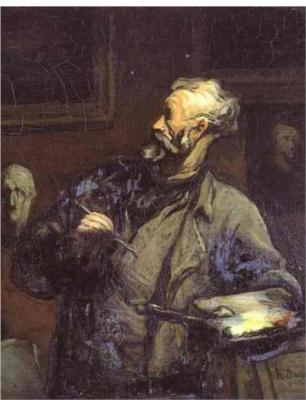

self-portrait
